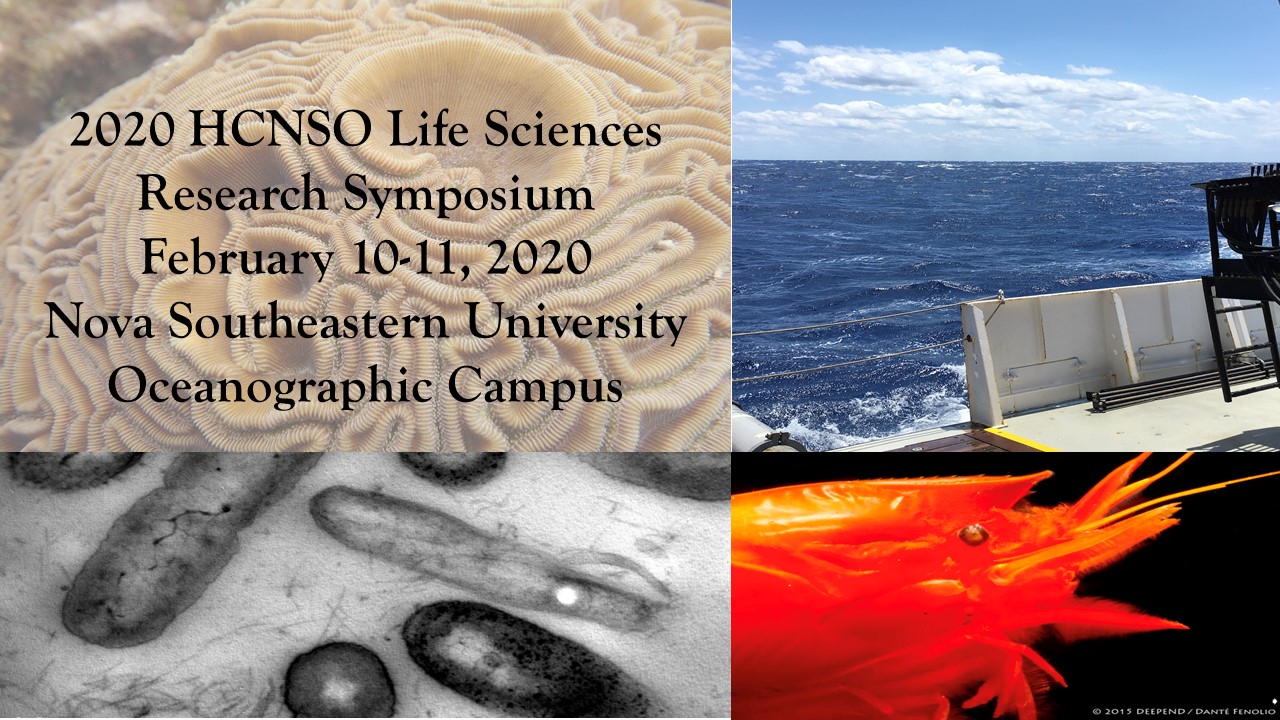Effect of Surfactants on the Generation of Sea Spray During Tropical Cyclones
Location
HCNSO Guy Harvey Oceanographic Center Nova Southeastern University
Start
2-10-2020 10:00 AM
End
2-10-2020 10:15 AM
Type of Presentation
Oral Presentation
Abstract
Effect of Surfactants on the Generation of Sea Spray During Tropical Cyclones
B. Vanderplow1, A.V. Soloviev1, C.W. Dean1, B.K. Haus2, R. Lukas3
1Nova Southeastern University, Dania Beach, Florida, USA
2University of Miami, Miami, Florida, USA
3University of Hawaii, Honolulu, Hawaii, USA
Research on the impacts of dispersants for marine oil spill response has primarily focused on biological and ecological components of the ocean, including their effect on fish, corals, birds, and other marine organisms. Dispersants may also impact physical processes in the ocean, as the surfactants used to create them reduce surface tension, dampen short gravity-capillary waves, and suppress near-surface turbulence at the sea surface. The air-sea interface undergoes modification as wind speed increases, such as during tropical cyclones. Under tropical cyclone conditions surfactants may impact the generation of sea spray and spume. A shift in the size distribution of sea spray may influence heat and momentum flux between the hydrosphere and atmosphere during tropical cyclones. The relationship between surfactants, wind speed, and sea spray generation remains poorly understood. To further understand this relationship, we use computational fluid dynamics tools to model the effect of surfactants on sea spray generation under tropical cyclone conditions. ANSYS Fluent’s Volume of Fluid to Discrete Phase Model converts water parcels to Lagrangian particles, which represent sea spray and spume in our model. Preliminary model results suggest that the as the amount of surfactant present increases, the overall abundance of spray under tropical cyclone winds also increases. Laboratory results from an experiment conducted at the University of Miami indicated that surfactants alter sea spray generation by forming branch-like rather than finger-like structures, which fragment into differing sizes of sea spray or spume. Under tropical cyclone conditions, surfactants at the sea surface may affect heat, energy, and momentum exchanges due to altered size distribution and abundance of sea spray and spume. The effect of surfactants on sea spray generation may have consequences for tropical cyclone intensification or decline, especially in areas affected by oil spills and dispersants.
Effect of Surfactants on the Generation of Sea Spray During Tropical Cyclones
HCNSO Guy Harvey Oceanographic Center Nova Southeastern University
Effect of Surfactants on the Generation of Sea Spray During Tropical Cyclones
B. Vanderplow1, A.V. Soloviev1, C.W. Dean1, B.K. Haus2, R. Lukas3
1Nova Southeastern University, Dania Beach, Florida, USA
2University of Miami, Miami, Florida, USA
3University of Hawaii, Honolulu, Hawaii, USA
Research on the impacts of dispersants for marine oil spill response has primarily focused on biological and ecological components of the ocean, including their effect on fish, corals, birds, and other marine organisms. Dispersants may also impact physical processes in the ocean, as the surfactants used to create them reduce surface tension, dampen short gravity-capillary waves, and suppress near-surface turbulence at the sea surface. The air-sea interface undergoes modification as wind speed increases, such as during tropical cyclones. Under tropical cyclone conditions surfactants may impact the generation of sea spray and spume. A shift in the size distribution of sea spray may influence heat and momentum flux between the hydrosphere and atmosphere during tropical cyclones. The relationship between surfactants, wind speed, and sea spray generation remains poorly understood. To further understand this relationship, we use computational fluid dynamics tools to model the effect of surfactants on sea spray generation under tropical cyclone conditions. ANSYS Fluent’s Volume of Fluid to Discrete Phase Model converts water parcels to Lagrangian particles, which represent sea spray and spume in our model. Preliminary model results suggest that the as the amount of surfactant present increases, the overall abundance of spray under tropical cyclone winds also increases. Laboratory results from an experiment conducted at the University of Miami indicated that surfactants alter sea spray generation by forming branch-like rather than finger-like structures, which fragment into differing sizes of sea spray or spume. Under tropical cyclone conditions, surfactants at the sea surface may affect heat, energy, and momentum exchanges due to altered size distribution and abundance of sea spray and spume. The effect of surfactants on sea spray generation may have consequences for tropical cyclone intensification or decline, especially in areas affected by oil spills and dispersants.


